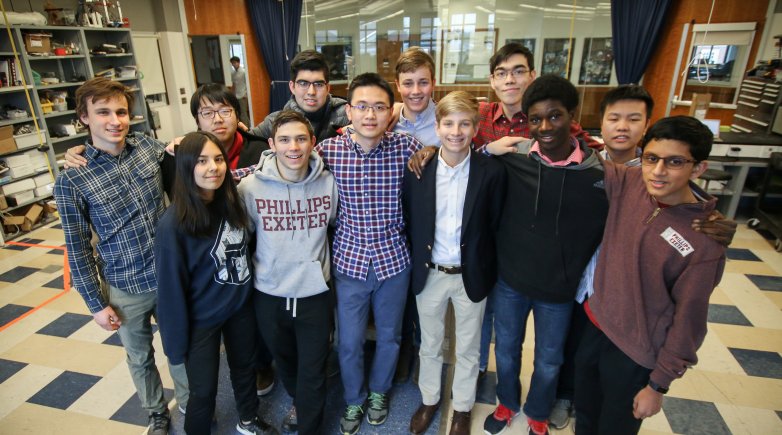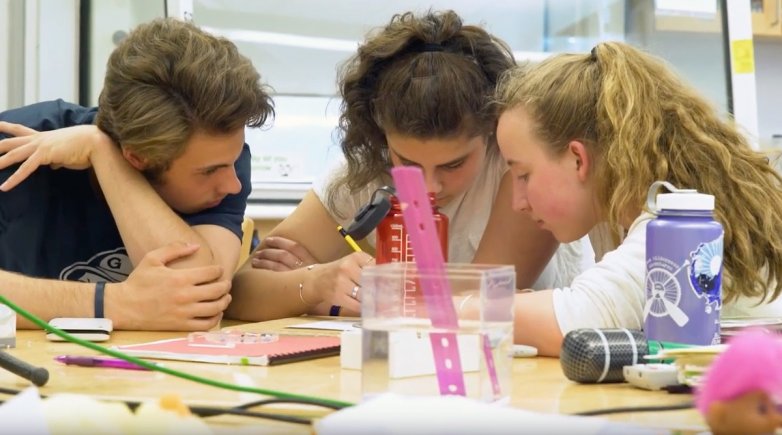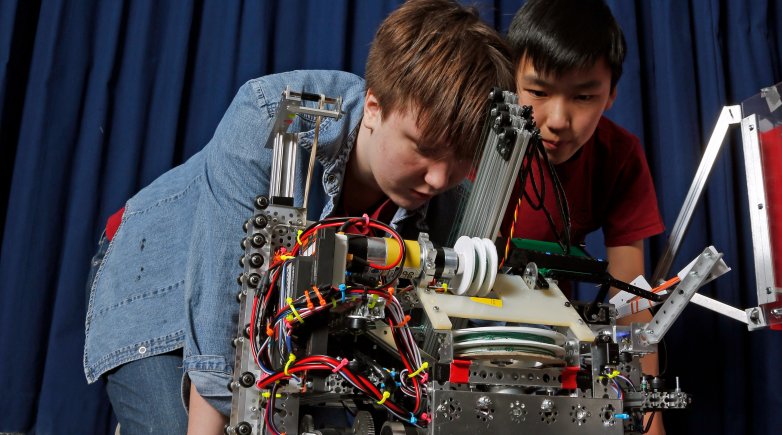Young physicists Super Bowl comes to Exeter
Scores of future scientists collide in international competition.
Members of Exeter's physics team talk through a problem during the international competition.
It’s a frigid Saturday morning, and five members of Exeter’s Physics Club are sitting in a Phelps Science Center hallway, eyes glued to their laptops. It’s the first day of the 13th annual United States Invitational Young Physicists Tournament (USIYPT) and, as tournament hosts and the 2018 and 2019 champions, the pressure’s on.
Brian Liu ’20 does a practice run through his presentation on investigating stable configurations of spherical magnets as Alex Morand ’22 and Tony Yu ’20 offer feedback. Neil Chowdhury ’22 double-checks the math of team captain Penny Brant ’22 math on her presentation measuring the length of an astronomical unit. Teammates Lucy Cai ‘21, Tony Cai ‘23, Jacob David ‘22, Ellie Griffin ‘21, Jonathan Meng ‘21, Jocelyn Sides ’22, Celine Tan ‘22, Max Tan ’21 and Lucy Xiao ‘22 are scattered throughout the classrooms, watching other schools’ presentations and collecting intel on the strengths and weaknesses of each.
The Exeter presenters — Brant, Liu, Morand and Yu — stayed up into the wee hours of Saturday fine-tuning their reports (including research, theory and scientific analysis) on each of USIYPT’s four physics problems. During the tournament, they’ll present, and defend, their work to opposing schools and a jury of physicists; they must also be prepared to challenge other schools’ findings.
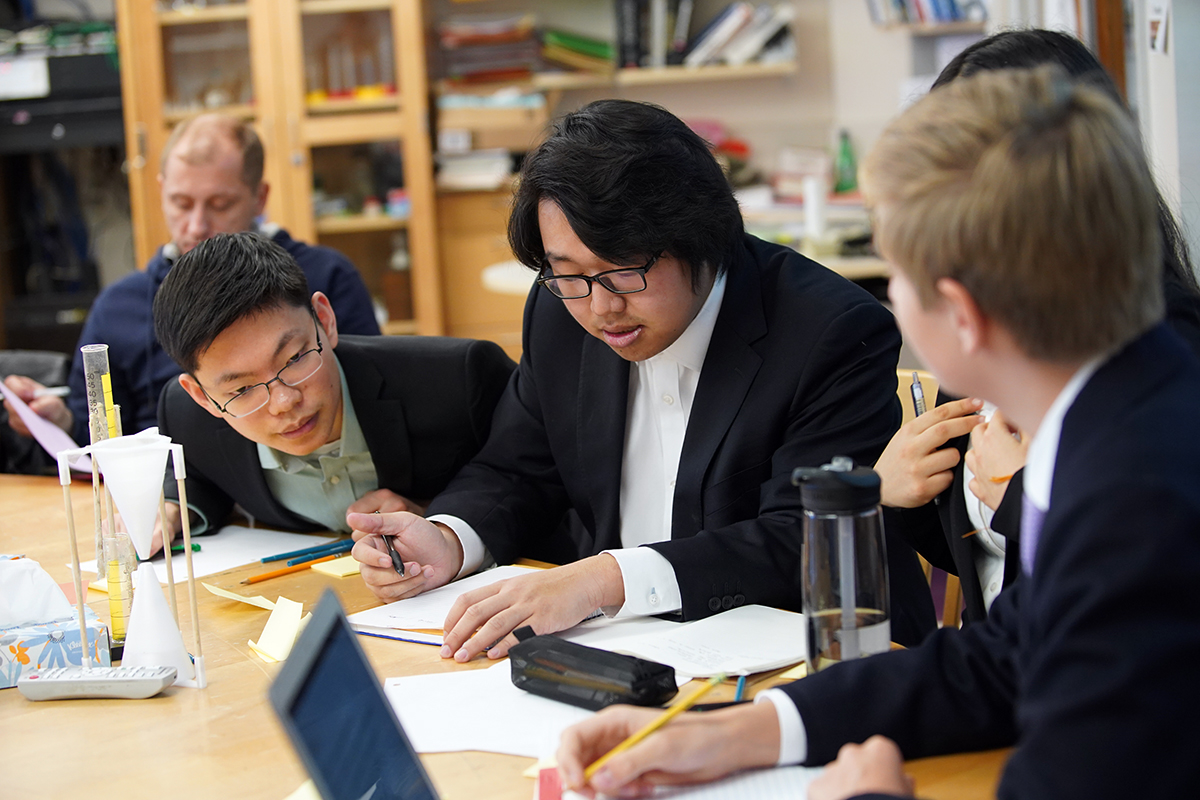
Brant turns to Yu, who, together with Morand, Chowdhury and Liu, are the sole remaining members from Exeter’s 2019 team, and asks, “How awake are you? What’s 17 + 67?”
Yu pauses. “80.”
“You’re definitely not awake,” Brant laughs. “I’ll challenge first,” she says, referring to their first competition round against Cary Academy of Cary, North Carolina.
Tony Cai returns to report on an opposing school’s presentation about calculating the weight of an hourglass. Yu, who will present on this topic, peppers him with questions: “How heavy was the sand?” “Did they use an actual hourglass?” Brant notes the time. They gather up laptops and backpacks and head upstairs for the first round of competition, talking physics along the way.
Good communication is good science
Strategy, camaraderie, competition, and spirited discussion are all part of USIYPT’s appeal to young physicists. Exeter finished third in this year’s tournament, which was held Feb. 8-9 and featured 11 schools from around the U.S., Europe and Latin America. Participating teams are judged according to their problem-solving methods and ability to clearly communicate solutions to physics problems as well as evaluate other schools’ presentations. The goal isn’t entirely about winning, it’s to have an informed, respectful conversation about physics.
“The essence of science is communication,” says Greg Jacobs, president of the U.S. Association of Young Physicists Tournaments. “You can’t win the competition without a substantive presentation, but we want to see students who know the science and can communicate their findings. It makes them better physicists.”
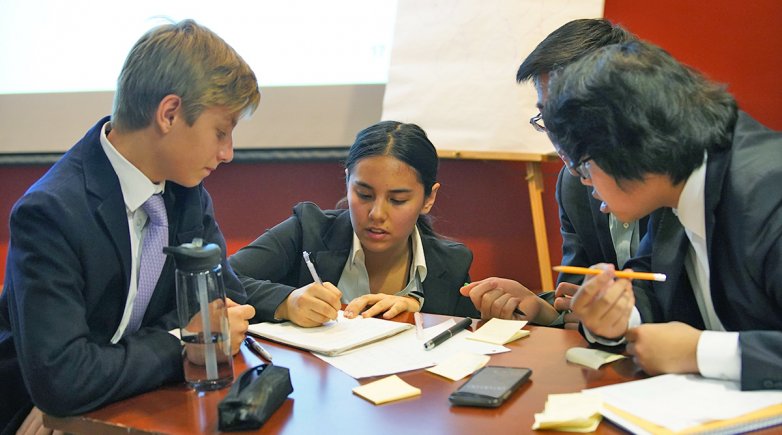
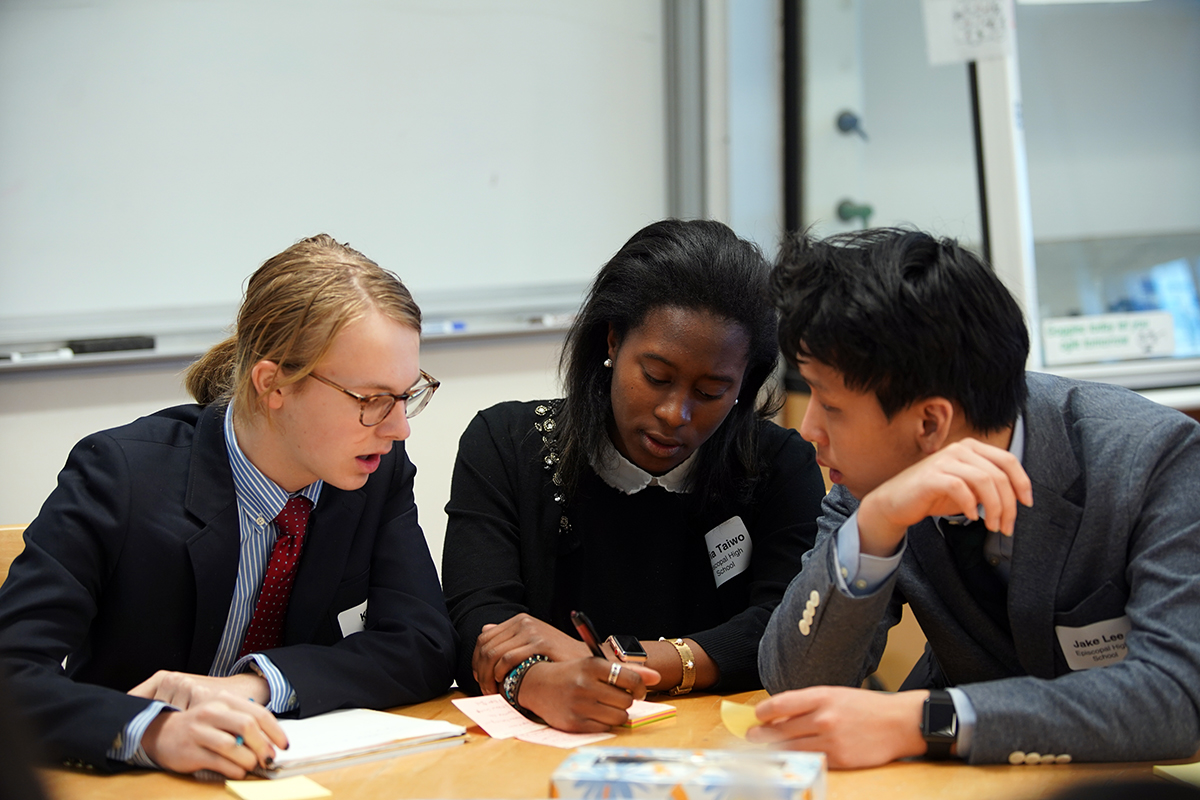 Conversation is part of USIYPT’s appeal and it continues long after the competition ends. Following his hourglass presentation on Sunday, Yu’s opponent challenged his reasoning; each team’s conclusions seemed correct. “After the competition, we talked for three hours,” says Yu. “We discovered we’d analyzed the problem in different ways to reach the same conclusion.”
Conversation is part of USIYPT’s appeal and it continues long after the competition ends. Following his hourglass presentation on Sunday, Yu’s opponent challenged his reasoning; each team’s conclusions seemed correct. “After the competition, we talked for three hours,” says Yu. “We discovered we’d analyzed the problem in different ways to reach the same conclusion.”
